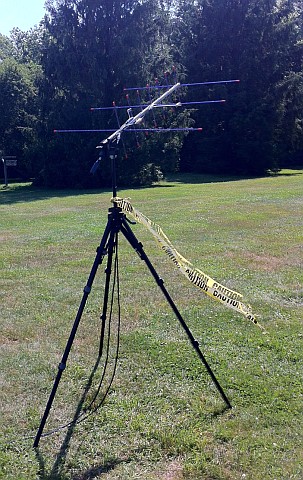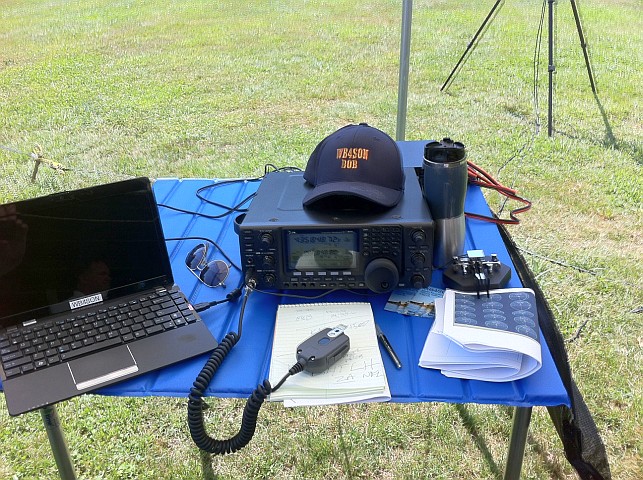After operating Field Day last year by myself (Category 1E) and remembering back to the fun I had with my fellow club members during FD with K4BFT in Huntsville, AL and K2AE in Schenectady, NY, I sought out a club to operate with this year. I wound up joining the Newport County Radio Club (a toll bridge and 25 miles away), and agreed to try for the 100 point bonus for making a satellite QSO. I understand they had tried several times in the past but had never managed a contact.
With the recent loss of AO-51, and the general reputation of the FM birds being impossibly crowded anyway, I decided to concentrate my efforts on the two remaining analog birds, 16-year old FO-29, and 7-year old VO-52. Of course there was always the 38-year old AO-7 as well.
I started about 2 weeks before making about two dozen contacts through FO-29, VO-52, AO-27 and SO-50 using my regular home antennas and preamps (M2 Eggbeaters with SSBE Preamps). So I knew my offsets and was back in the satellite grove. I setup my Arrow II Satellite Antenna and knew that it loaded well, but never had a chance to use it during an actual pass due to some nasty weather. So they mystery was if the gain of the crossed-yagi would offset the loss of the preamps, and how much desenseing my Icom IC-9100 would experience — what would Field Day be without a little mystery?
My goal was to get the Satellite QSO as quickly as I could on Saturday. We began operation at 1800UTC. During that time there was a pass of AO-27, but all I heard was Packet, no FM voice. AO-7 was my next attempt, and I easily heard my CW downlink, but the pass was marginal for the US, mostly favoring Europe. During the end of the pass I heard only one station, a European calling CQ Field Day, but I never copied his full call before the satellite passed beneath the horizon. Although I didn’t make any contacts, these initial attempts proved that the front-end of the IC-9100 was up to the task, and the beam gain more than made up for the lack of a preamp.
My last opportunity was a marginal FO-29 pass that would begin about 1855Z. The advantage was it was covering most of the US. The disadvantage was it would only reach about 20 degrees of altitude in a direction dominated by tall pine trees to my west. Right on schedule, FO-29 came into view and the receiver was filled with S5 to S9 strings of dots everywhere. There must have been dozens and dozens of stations all trying to find themselves. Because I already knew my offsets, my transmitter and receiver were already slaved spot-on, and sure enough I immediately heard my downlink. I called CQ and was rewarded with a reply on the first call, but the station sent my call about six times before sending his own, only to be lost in a a hail of QRM dots. I changed to SSB and was part way through a QSO when a full carrier obliterated the downlink.
With only about 12 minutes for the full pass there was little time to mess around, and I figured it was time for a new strategy. I changed back to CW to try search and pounce. Luckily I ran across K4TLH, a 2A station in Northern Florida calling CQ FD. At 1903UTC we completed our exchanges. I happened to setup in the GOTA tent, so the QSO was observed by a few guests as well. And just like that Newport County Radio Club, operating as W1LY, had their first Field Day satellite QSO (and I had mine too).
What was my overall impression? This was an interesting experiment, but impractical from an E-COM point of view. I can understand why this was so difficult during prior attempts. Bedlam on FO-29 made it hard to get through. I was unbelievably impressed that AO-7 is still working 38 years after launch (it was empty, however). But my biggest take-away was knowing your uplink/downlink offset prior to the contest was key to the almost impossible task of finding yourself in a sea of dots and being confident you are on frequency.










